Related Research Articles

Andrzej Sapkowski is a Polish fantasy writer, essayist, translator and a trained economist. He is best known for his six-volume series of books The Witcher, which revolves around the eponymous "witcher," a monster-hunter, Geralt of Rivia. It began with the publication of Sword of Destiny (1992), and was completed with the publication of standalone prequel novel Season of Storms (2013). The saga has been popularized through television, stage, comic books, video games and translated into 37 languages making him the second most-translated Polish science fiction and fantasy writer after Stanisław Lem.

A troll is a being in Nordic folklore, including Norse mythology. In Old Norse sources, beings described as trolls dwell in isolated areas of rocks, mountains, or caves, live together in small family units, and are rarely helpful to human beings.
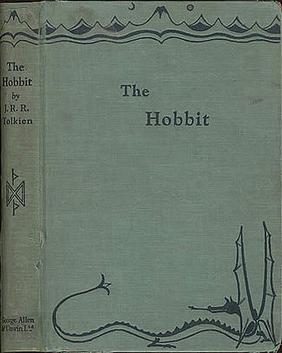
The Hobbit, or There and Back Again is a children's fantasy novel by English author J. R. R. Tolkien. It was published in 1937 to wide critical acclaim, being nominated for the Carnegie Medal and awarded a prize from the New York Herald Tribune for best juvenile fiction. The book is recognized as a classic in children's literature, and is one of the best-selling books of all time with over 100 million copies sold.
Thorin Oakenshield is a fictional character in J. R. R. Tolkien's 1937 novel The Hobbit. Thorin is the leader of the Company of Dwarves who aim to reclaim the Lonely Mountain from Smaug the dragon. He is the son of Thráin II, grandson of Thrór, and becomes King of Durin's Folk during their exile from Erebor. Thorin's background is further elaborated in Appendix A of Tolkien's 1955 novel The Return of the King, and in Unfinished Tales.
Eärendil the Mariner and his wife Elwing are characters in J. R. R. Tolkien's Middle-earth legendarium. They are depicted in The Silmarillion as Half-elven, the children of Men and Elves. He is a great seafarer who, on his brow, carried the morning star, a jewel called a Silmaril, across the sky. The jewel had been saved by Elwing from the destruction of the Havens of Sirion. The morning star and the Silmarils are elements of the symbolism of light, for divine creativity, continually splintered as history progresses. Tolkien took Eärendil's name from the Old English name Earendel, found in the poem Crist A, which hailed him as "brightest of angels"; this was the beginning of Tolkien's Middle-earth mythology. Elwing is the granddaughter of Lúthien and Beren, and is descended from Melian the Maia. Through their progeny, Eärendil and Elwing became the ancestors of the Númenorean, and later Dúnedain, royal bloodline.
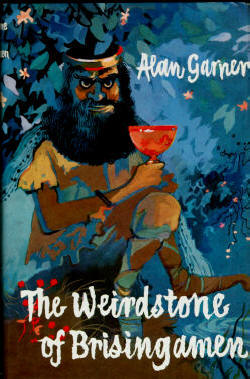
The Weirdstone of Brisingamen: A Tale of Alderley is a children's fantasy novel by English author Alan Garner. Garner began work on the novel, his literary debut, in 1957, after he moved into the late medieval house, Toad Hall, in Blackden, Cheshire. The story, which took the local legend of The Wizard of the Edge as a partial basis for the novel's plot, was influenced by the folklore and landscape of neighbouring Alderley Edge where he had grown up. Upon completion the book was picked up by Sir William Collins who released it through his publishing company Collins in 1960.
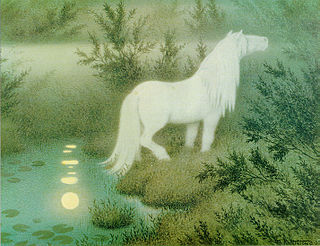
A fantasy world or fictional world is a world created for fictional media, such as literature, film or games. Typical fantasy worlds feature magical abilities. Some worlds may be a parallel world connected to Earth via magical portals or items ; an imaginary universe hidden within ours ; a fictional Earth set in the remote past or future ; an alternative version of our History ; or an entirely independent world set in another part of the universe.
Trolls are fictional characters in J. R. R. Tolkien's Middle-earth, and feature in films and games adapted from his novels. They are portrayed as monstrously large humanoids of great strength and poor intellect. In The Hobbit, like the dwarf Alviss of Norse mythology, they must be below ground before dawn or turn to stone, whereas in The Lord of the Rings they are able to face daylight.

In many works of modern fantasy, elves are depicted as a race or species of pointy-eared humanoid beings. These depictions arise from the álfar of Norse mythology influencing elves in fantasy as being semi-divine and of human stature, whose key traits are being friendly with nature and animals. However, this differs from Norse and the traditional elves found in Middle Ages folklore and Victorian era literature.
The Norse mythology, preserved in such ancient Icelandic texts as the Poetic Edda, the Prose Edda, and other lays and sagas, was little known outside Scandinavia until the 19th century. With the widespread publication of Norse myths and legends at this time, references to the Norse gods and heroes spread into European literary culture, especially in Scandinavia, Germany, and Britain. In the later 20th century, references to Norse mythology became common in science fiction and fantasy literature, role-playing games, and eventually other cultural products such as Japanese animation. Storytelling was an important aspect of Norse mythology and centuries later, with the rediscovery of the myth, Norse mythology once again relies on the impacts of storytelling to spread its agenda.
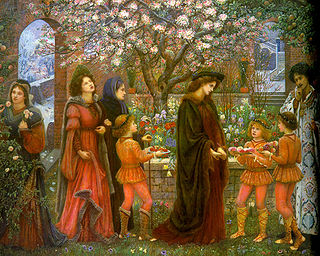
A magician, also known as an archmage, mage, magus, magic-user, spellcaster, enchanter/enchantress, sorcerer/sorceress, warlock, witch, or wizard, is someone who uses or practices magic derived from supernatural, occult, or arcane sources. Magicians are common figures in works of fantasy, such as fantasy literature and role-playing games, and enjoy a rich history in mythology, legends, fiction, and folklore.

The Broken Sword is a fantasy novel by American writer Poul Anderson, originally published on 5 November 1954. It was issued in a revised edition by Ballantine Books as the twenty-fourth volume of their Ballantine Adult Fantasy series in January 1971. The original text was returned to print by Gollancz in 2002. The novel is set during the Viking Age and the story contains many references to the Norse mythology.
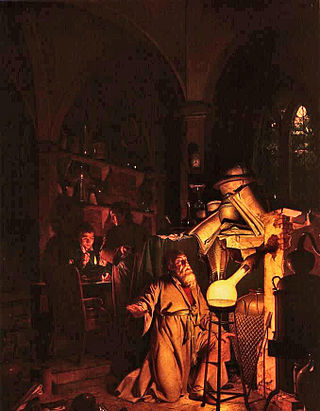
Elements of the supernatural and the fantastic were an element of literature from its beginning, though the idea of a distinct genre, in the modern sense, is less than two centuries old.

J. R. R. Tolkien's fantasy books on Middle-earth, especially The Lord of the Rings and The Silmarillion, drew on a wide array of influences including language, Christianity, mythology, archaeology, ancient and modern literature, and personal experience. He was inspired primarily by his profession, philology; his work centred on the study of Old English literature, especially Beowulf, and he acknowledged its importance to his writings.
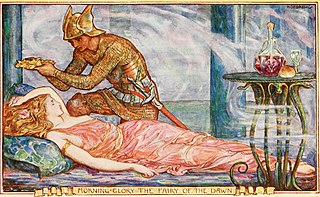
Fantasy is a genre of speculative fiction involving magical elements, typically set in a fictional universe and usually inspired by mythology or folklore. The term "fantasy" can also be used to describe a "work of this genre", usually literary.
J. R. R. Tolkien, a fantasy author and professional philologist, drew on the Old English poem Beowulf for multiple aspects of his Middle-earth legendarium, alongside other influences. He used elements such as names, monsters, and the structure of society in a heroic age. He emulated its style, creating an impression of depth and adopting an elegiac tone. Tolkien admired the way that Beowulf, written by a Christian looking back at a pagan past, just as he was, embodied a "large symbolism" without ever becoming allegorical. He worked to echo the symbolism of life's road and individual heroism in The Lord of the Rings.
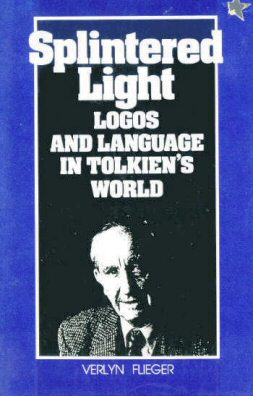
Splintered Light: Logos and Language in Tolkien's World is an 1983 book of literary criticism by the leading Tolkien scholar Verlyn Flieger, in which she argues that light is a central theme of Tolkien's Middle-earth mythology, in particular in The Silmarillion. It has been admired by other scholars to the extent that it has become a core element of Tolkien scholarship.

Tolkien derived the characters, stories, places, and languages of Middle-earth from many sources. Among these are Norse mythology, seen in his Dwarves, Wargs, Trolls, Beorn and the barrow-wight, places such as Mirkwood, characters including the Wizards Gandalf and Saruman and the Dark Lords Morgoth and Sauron derived from the Norse god Odin, magical artefacts like the One Ring and Aragorn's sword Andúril, and the quality that Tolkien called "Northern courage". The powerful Valar, too, somewhat resemble the pantheon of Norse gods, the Æsir.
J. R. R. Tolkien repeatedly dealt with the theme of death and immortality in Middle-earth. He stated that the "real theme" of The Lord of the Rings was "Death and Immortality". In Middle-earth, Men are mortal, while Elves are immortal. One of his stories, The Tale of Aragorn and Arwen, explores the willing choice of death through the love of an immortal Elf for a mortal Man. He several times revisited the Old Norse theme of the mountain tomb, containing treasure along with the dead and visited by fighting. He brought multiple leading evil characters in The Lord of the Rings to a fiery end, including Gollum, the Nazgûl, the Dark Lord Sauron, and the evil Wizard Saruman, while in The Hobbit, the dragon Smaug is killed. Their destruction contrasts with the heroic deaths of two leaders of the free peoples, Théoden of Rohan and Boromir of Gondor, reflecting the early Medieval ideal of Northern courage. Despite these pagan themes, the work contains hints of Christianity, such as of the resurrection of Christ, as when the Lord of the Nazgûl, thinking himself victorious, calls himself Death, only to be answered by the crowing of a cockerel. There are, too, hints that the Elvish land of Lothlórien represents an Earthly Paradise. Scholars have commented that Tolkien clearly moved during his career from being oriented towards pagan themes to a more Christian theology.
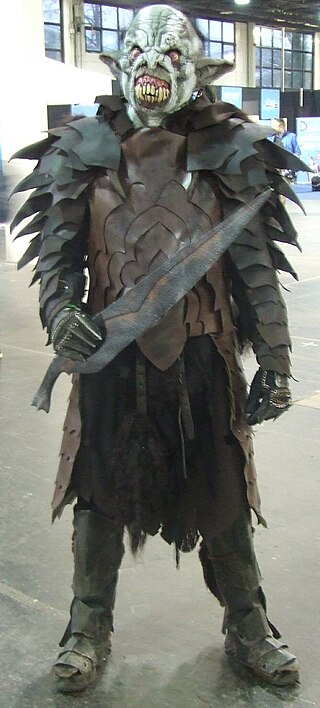
J. R. R. Tolkien has been called the "father of fantasy". His novel The Lord of the Rings, published in 1954–5, enormously influenced fantasy writing, establishing in particular the form of high or epic fantasy, set in a secondary or fantasy world in an act of mythopoeia. The book was distinctive at the time for its considerable length, its "epic" feel with a cast of heroic characters, its wide geography, and its battles. It involved an extensive history behind the action, an impression of depth, multiple sentient races and monsters, and powerful talismans. The story is a quest, with multiple subplots. The novel's success demonstrated that the genre was commercially distinct and viable.
References
- ↑ "Author Information: Elizabeth H. Boyer". Internet Book List. Archived from the original on 2016-03-03. Retrieved 2014-11-19.
- ↑ "Elizabeth Boyer". FantasyLibrary.net. Archived from the original on 2015-02-17. Retrieved 2014-11-19.
- ↑ "Author Elizabeth H. Boyer's Biography,Bibliography,Novels,Short Stories,Related Websites". SFBookcase.com. Retrieved 2014-11-19.
- 1 2 D'Ammassa, Don (14 May 2014). Encyclopedia of Fantasy and Horror Fiction. Infobase Publishing. p. 31. ISBN 978-1-4381-0909-1.